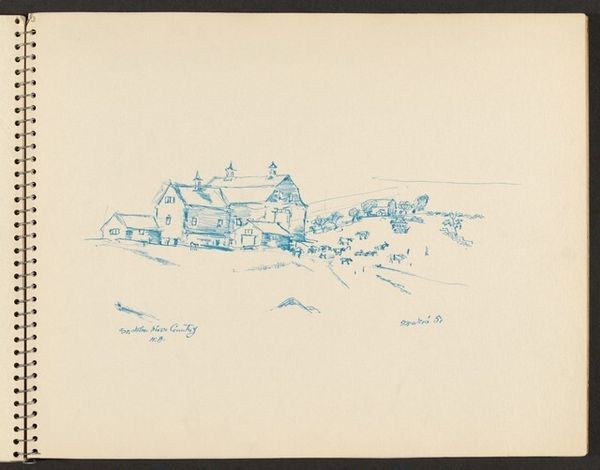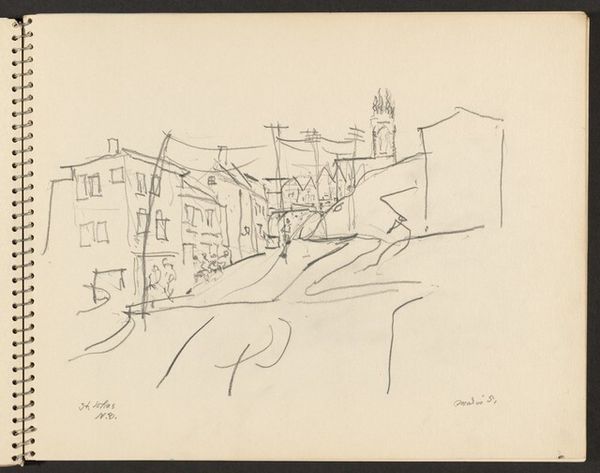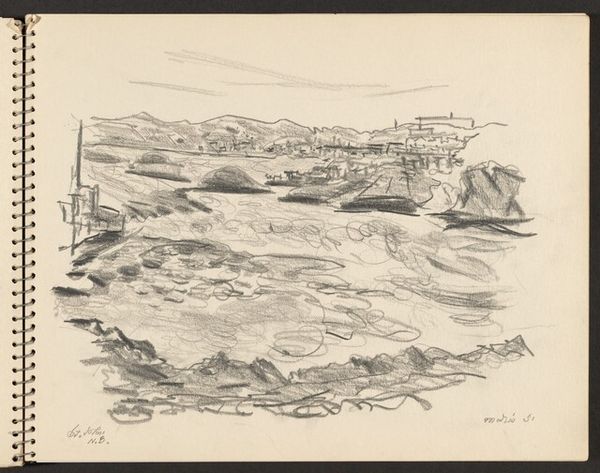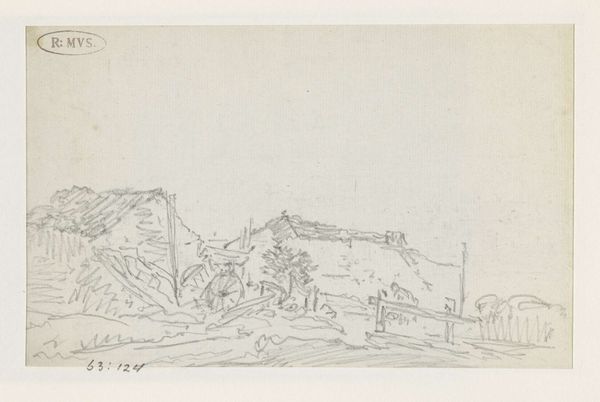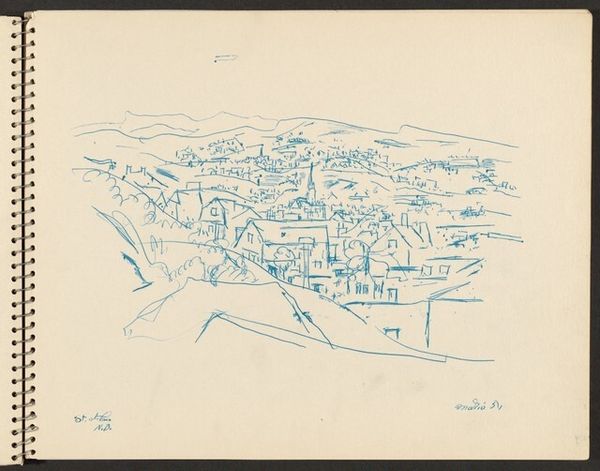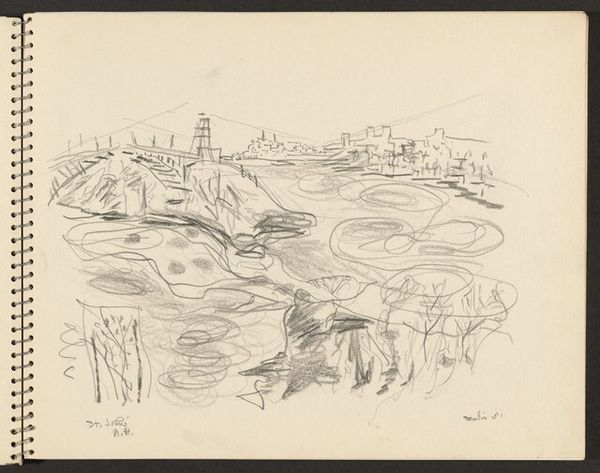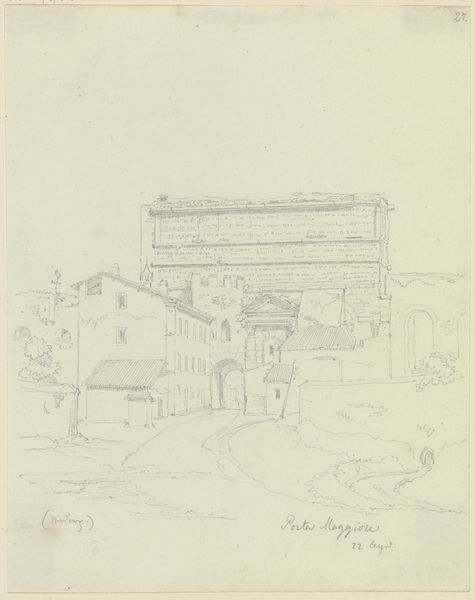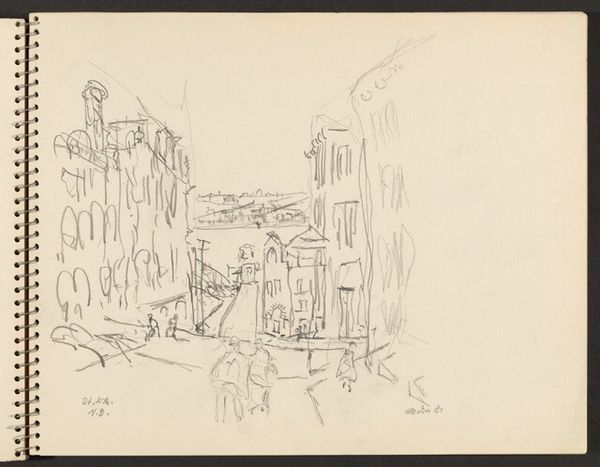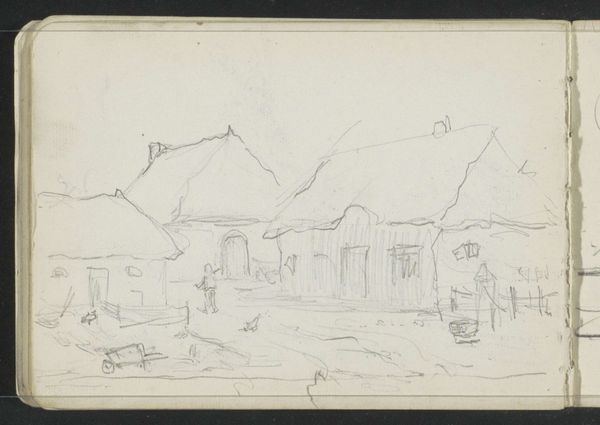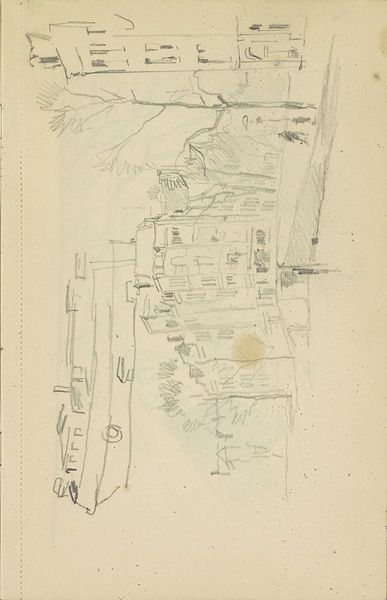
drawing, pencil
#
drawing
#
mechanical pen drawing
#
pen illustration
#
pen sketch
#
landscape
#
ink line art
#
personal sketchbook
#
ink drawing experimentation
#
pen-ink sketch
#
pencil
#
thin linework
#
pen work
#
sketchbook drawing
#
cityscape
#
realism
Dimensions: sheet: 27.94 × 35.24 cm (11 × 13 7/8 in.)
Copyright: National Gallery of Art: CC0 1.0
Curator: Here we have John Marin’s “St. Johns, New Brunswick, Canada,” dating to 1951. It’s rendered with pencil and ink on paper, capturing a cityscape with brisk, suggestive lines. Editor: It feels incredibly immediate. A few quick strokes and you get the sense of a bustling harbor – the industrial buildings juxtaposed with smaller, almost domestic structures by the water. Curator: Note the density of marks. Marin layers and crosses lines to convey a remarkable sense of depth and atmosphere. He seems to be very intentionally playing with contrasting areas of light and shadow within a very limited grayscale. Editor: Absolutely. But I think we need to consider this in the context of postwar Canadian industrial expansion. Look at the prominence of the shipping industry implied by the scale of the ship on the horizon and large structures along the coast. The drawing captures that moment of rapid change, where traditional labor is shifting with modernized trade. Curator: Yes, but isn't the real success here in Marin’s control of line weight and his deft manipulation of perspective? The curving road draws your eye, and then those buildings on the left—they almost teeter, suggesting movement and energy through purely formal means. It's less about the place itself, and more about his interpretation of it. Editor: But we cannot extract art from labor. This "energy", this "interpretation" speaks directly to his engagement and perception of the industrial work he observed, the city's relationship to the port. His subjective perception *is* part of this wider system. And, even his own artistic labor is present: we can almost feel him moving and leaning to get this quick view down. Curator: I suppose what intrigues me most is the simplicity and economy with which Marin achieved such evocative results with so few marks. The immediacy, almost like a snapshot, belies how thoughtfully crafted this seemingly spontaneous drawing is. Editor: It's fascinating how he captured such a dynamic period. This artwork leaves me pondering the relationships between labor, infrastructure and aesthetics.
Comments
No comments
Be the first to comment and join the conversation on the ultimate creative platform.
